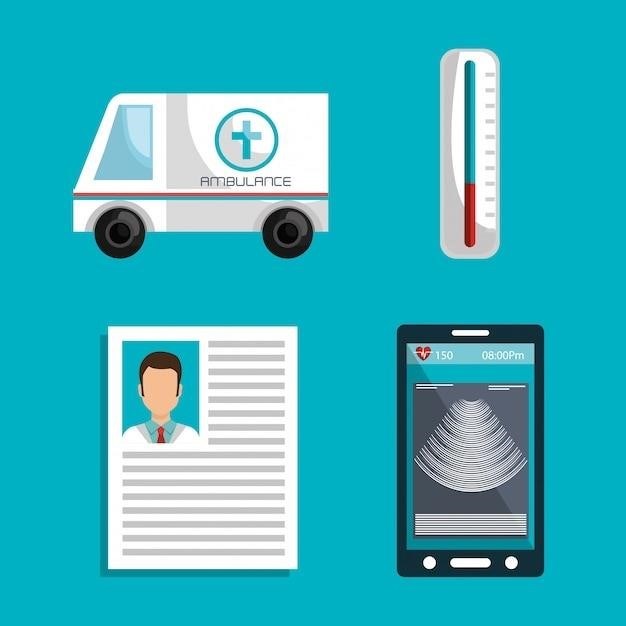pdf to ai converter
PDF to AI Converter: A Comprehensive Guide
In today’s digital landscape, converting PDFs to AI (Adobe Illustrator) format is increasingly crucial․ This guide provides a comprehensive overview, exploring methods, tools, and future trends in seamless PDF to AI conversion․
The process of converting PDF (Portable Document Format) files to AI (Adobe Illustrator) format has become increasingly relevant in today’s design and editing workflows․ PDFs, known for their fixed layout and universal accessibility, often need to be transformed into editable vector graphics for detailed manipulation․ This is where PDF to AI conversion comes into play․
AI, the native file format for Adobe Illustrator, offers unparalleled flexibility in editing and scaling graphics without loss of quality․ By converting a PDF to AI, designers and editors gain access to layers, paths, and other vector-based elements, enabling precise modifications․
This conversion process bridges the gap between static document presentation and dynamic graphic editing, allowing for creative enhancements, repurposing of content, and high-definition printing applications․ Whether it’s refining logos, modifying illustrations, or extracting specific elements, PDF to AI conversion unlocks a world of possibilities for graphic professionals and enthusiasts alike․ Understanding the nuances of this conversion is essential for optimizing workflows and achieving desired results․
Why Convert PDF to AI? Benefits and Use Cases
Converting PDF files to AI format offers numerous benefits and caters to a wide range of use cases․ One primary advantage is the ability to edit and modify vector graphics within Adobe Illustrator․ Unlike PDFs, which are often static and difficult to alter, AI files provide access to individual elements, allowing for precise adjustments to shapes, colors, and text․
This capability is crucial for graphic designers who need to refine logos, illustrations, or other visual assets․ Furthermore, AI files are scalable without loss of quality, making them ideal for high-resolution printing and various design applications․ Converting to AI also enables the extraction of specific elements from a PDF, which can then be repurposed in other projects․
Common use cases include enhancing marketing materials, updating branding elements, and creating detailed technical drawings․ The conversion process streamlines workflows by providing greater control over the design process․ In essence, transforming PDFs into AI files empowers users with the flexibility and precision needed for professional graphic editing․
Methods for Converting PDF to AI
Several methods exist for converting PDF files to AI format, each with its own advantages and considerations․ Online PDF to AI converters offer a convenient option, allowing users to upload their files and receive the converted AI file without the need for software installation․ These tools are often free and easy to use, making them suitable for quick conversions․
Offline PDF to AI software provides a more robust solution, offering advanced features and greater control over the conversion process․ These programs typically support batch conversions and allow users to customize settings for optimal results․ Adobe Illustrator itself can be used to directly open and save PDFs as AI files, ensuring high fidelity and compatibility․
Each method caters to different needs and technical skills․ Online converters are ideal for simple tasks, while offline software is better suited for complex projects․ Adobe Illustrator offers the most comprehensive solution for professionals requiring precise control over vector graphics․ Selecting the right method depends on the specific requirements of the conversion task․
Online PDF to AI Converters
Online PDF to AI converters offer a user-friendly and accessible method for transforming PDF documents into editable Adobe Illustrator files․ These web-based tools eliminate the need for software downloads, allowing users to perform conversions directly within their browsers․ The process typically involves uploading the PDF file to the converter’s website, initiating the conversion, and then downloading the resulting AI file․
Many online converters are free to use, making them an attractive option for users with occasional conversion needs․ They often support batch conversions, enabling the processing of multiple files simultaneously․ However, it’s important to consider the limitations of online converters, such as file size restrictions and potential security concerns regarding uploading sensitive documents to third-party websites․
Popular online PDF to AI converters include options like OnlineConvert, FileZigZag, and MConverter․ These tools provide a convenient way to convert PDF files to AI format, offering a balance of simplicity and functionality for various user requirements․ Always ensure you’re using a reputable and secure online converter to protect your data․
Offline PDF to AI Software
Offline PDF to AI software provides a secure and feature-rich alternative to online converters․ These desktop applications offer enhanced control over the conversion process, eliminating the need to upload sensitive documents to external servers․ Offline software often boasts advanced features, such as optical character recognition (OCR) for converting scanned PDFs and precise vectorization for maintaining image quality․
Using dedicated software ensures that the conversion process takes place entirely on your computer, mitigating potential security risks․ Furthermore, offline tools typically offer more extensive editing capabilities, allowing users to refine the converted AI file before exporting it․ While requiring an initial investment, offline PDF to AI software provides a reliable and comprehensive solution for professional users․
Popular offline options include Adobe Illustrator itself, which directly supports PDF to AI conversion, and specialized PDF editors like Filestar․ These software solutions offer a robust set of tools for accurate and efficient PDF to AI conversion, catering to users who prioritize security, control, and advanced features․ Always consider your specific needs and budget when choosing an offline converter․
Using Adobe Illustrator for Conversion
Adobe Illustrator, the industry-standard vector graphics editor, offers a direct and powerful method for converting PDFs to AI files․ This approach provides unparalleled control over the conversion process and ensures the highest possible fidelity in the resulting vector artwork․ To convert a PDF using Illustrator, simply open the PDF file directly within the application․
Illustrator will automatically interpret the PDF content, preserving vector elements, text, and embedded images․ Once the PDF is open, you can edit and manipulate the artwork as needed, leveraging Illustrator’s comprehensive suite of design tools․ To finalize the conversion, select “Save As” and choose the AI file format․
Illustrator’s native PDF support allows for seamless integration and precise control over the conversion process․ This method is particularly advantageous for complex PDFs with intricate vector graphics and typography․ While Illustrator requires a subscription, its robust features and precise conversion capabilities make it the preferred choice for professional designers and illustrators who demand the highest quality results․ Remember to review and adjust settings to optimize the AI output․
Top PDF to AI Converters in 2025
As we move into 2025, the landscape of PDF to AI converters is becoming increasingly diverse, offering a range of options to suit different needs and budgets․ Identifying the top converters requires considering factors like accuracy, speed, ease of use, and cost․ Several contenders stand out, each with unique strengths and weaknesses․
Adobe Illustrator remains a top choice for professionals, offering unparalleled control and precision․ However, its subscription-based model might not be suitable for all users․ Online converters like Convertio and FileZigZag provide convenient and accessible options for occasional conversions, but their accuracy and limitations on file size should be considered․
Other notable converters include ImageConvert and dedicated PDF tools that integrate AI-powered features for enhanced conversion quality․ Ultimately, the “best” converter depends on individual requirements․ Evaluate your specific needs, consider the trade-offs between cost and features, and explore free trials or reviews before committing to a particular solution․ This will ensure you select a PDF to AI converter that meets your demands in 2025․
Free Online Converters
In the realm of PDF to AI conversion, free online converters offer a tempting entry point, providing accessibility and convenience without any upfront cost․ Several platforms stand out, providing a range of features and capabilities․ These converters often operate on a web-based interface, eliminating the need for software installation and making them accessible from any device with an internet connection․
Popular options include Convertio, OnlineConvertFree, and FileZigZag, each offering varying levels of accuracy and functionality․ While these tools can be useful for simple conversions, it’s essential to be aware of their limitations․ Free online converters often impose file size restrictions, may introduce watermarks, and might not perfectly preserve complex formatting or vector information․
Furthermore, security is a consideration, as uploading sensitive documents to a third-party platform carries inherent risks․ Despite these drawbacks, free online converters offer a valuable solution for users with basic conversion needs and limited budgets․ However, for professional or high-precision tasks, paid software or dedicated offline tools may be more suitable․ Remember to always review the terms of service and privacy policies before using any online converter․
Paid Software Options
For users requiring professional-grade PDF to AI conversion, paid software options offer a more robust and reliable solution․ These programs typically provide advanced features, improved accuracy, and enhanced security compared to their free online counterparts․ Adobe Illustrator, the industry-standard vector graphics editor, remains a top choice, offering seamless PDF import and comprehensive editing capabilities․
Alternative paid software includes specialized PDF converters like Filestar, known for its versatility and batch processing capabilities․ These tools often incorporate optical character recognition (OCR) technology to accurately convert scanned PDFs into editable AI files․ Furthermore, paid software typically removes file size limitations and watermarks, ensuring a clean and professional output․
Investing in paid software offers several advantages, including enhanced control over the conversion process, improved preservation of formatting and vector information, and dedicated customer support․ While the initial cost may be higher, the long-term benefits of accuracy, efficiency, and security make paid software a worthwhile investment for professionals and businesses requiring reliable PDF to AI conversion․ Consider your specific needs and budget when choosing the right paid software solution․
Step-by-Step Guide to Converting PDF to AI Online
Converting a PDF to AI online is a straightforward process․ First, select a reputable online PDF to AI converter tool․ Ensure the website is secure and offers the features you need․ Once chosen, navigate to the converter’s webpage and locate the file upload area, often indicated by a button labeled “Choose File” or a drag-and-drop zone․
Select the PDF file you wish to convert from your computer or device․ After uploading, the conversion process typically starts automatically․ Some converters may offer options to adjust settings or specify output preferences․ Once the conversion is complete, a download button will appear, allowing you to save the resulting AI file to your device․
Before downloading, preview the converted file if the option is available, to ensure the conversion meets your expectations․ Keep in mind that online converters might have limitations on file size or the number of conversions per day․ If you frequently convert large or sensitive PDFs, consider an offline software solution for better control and security․ Always download the converted file to a secure location on your computer․
Considerations When Choosing a Converter
Selecting the right PDF to AI converter depends on several factors․ Accuracy is paramount; the chosen converter should faithfully reproduce the PDF’s content in the AI format, preserving details like fonts, colors, and vector graphics; Speed is also important, especially when dealing with large files or numerous conversions․ A fast converter saves valuable time and improves productivity․
Security is a crucial consideration․ Online converters should employ robust security measures to protect your data during the upload, conversion, and download processes․ Look for converters with SSL encryption and clear privacy policies․ For sensitive documents, offline converters offer better security as the conversion happens locally on your computer․
Consider the converter’s features and compatibility․ Does it support batch conversion, allowing you to convert multiple files at once? Is it compatible with your operating system? Does it offer customization options, such as specifying the AI version or adjusting image resolution? Finally, evaluate the cost․ Free converters may have limitations, while paid options typically offer more features, better performance, and dedicated support․
Limitations of PDF to AI Conversion
While converting PDF to AI offers numerous advantages, it’s crucial to acknowledge its limitations․ Complex PDFs with intricate layouts, embedded fonts, and raster images can pose challenges․ The conversion process may not always perfectly replicate the original design, leading to discrepancies in formatting, text reflow, or image quality․
Scanned PDFs, which are essentially images of text, require Optical Character Recognition (OCR) to become editable in AI․ OCR accuracy can vary, especially with low-quality scans or unusual fonts, resulting in errors and the need for manual correction․ Furthermore, AI files can become large and unwieldy, particularly after converting PDFs with many pages or high-resolution images․
Certain PDF features, such as interactive elements, form fields, and annotations, may not be fully supported during conversion to AI․ These elements might be lost or require manual recreation in Adobe Illustrator․ Before converting, it’s essential to assess the PDF’s complexity and features to anticipate potential limitations and plan for necessary adjustments afterward․ Understanding these limitations helps manage expectations and ensures a smoother workflow․
AI-Powered Features in PDF Converters
Modern PDF converters are increasingly leveraging the power of Artificial Intelligence (AI) to enhance their capabilities․ AI-powered Optical Character Recognition (OCR) significantly improves the accuracy of converting scanned PDFs into editable text, even with complex layouts or unusual fonts․ Intelligent layout analysis algorithms can now better preserve the original formatting and structure of PDFs during conversion, reducing the need for manual adjustments․
AI is also enabling advanced image processing, automatically optimizing images for AI compatibility and reducing file sizes without sacrificing quality․ Some converters offer AI-driven text recognition that identifies and corrects potential errors in the converted text, ensuring greater accuracy․ Furthermore, AI-powered features can automatically detect and convert tables, charts, and other complex elements into editable objects within Adobe Illustrator․
These AI-driven advancements streamline the conversion process, saving time and effort while delivering more accurate and editable AI files․ As AI technology continues to evolve, we can expect even more sophisticated features to emerge, further enhancing the efficiency and quality of PDF to AI conversion․ This ultimately leads to a smoother workflow and better results for users․
Future Trends in PDF to AI Conversion Technology
The future of PDF to AI conversion is poised for exciting advancements, driven by the rapid evolution of artificial intelligence (AI) and machine learning․ We can anticipate even more sophisticated AI-powered OCR technology, capable of handling increasingly complex and stylized fonts with near-perfect accuracy․ Enhanced layout recognition will ensure that even intricate PDF designs are faithfully replicated in the AI format, minimizing the need for manual correction․
Cloud-based conversion services will likely become even more prevalent, offering seamless integration with various platforms and devices․ Real-time conversion and collaboration features could also emerge, enabling multiple users to work on the same PDF to AI conversion project simultaneously․ Furthermore, AI-driven automation may streamline the entire workflow, automatically identifying and converting specific elements within a PDF based on user-defined criteria․
Integration with other AI-powered design tools is another potential trend, allowing for seamless transfer of converted AI files into other creative applications․ Ultimately, the future of PDF to AI conversion technology lies in creating a more intuitive, efficient, and accurate process that empowers users to unlock the full potential of their PDF documents․ The focus will be on intelligent automation and seamless integration with other creative workflows․



